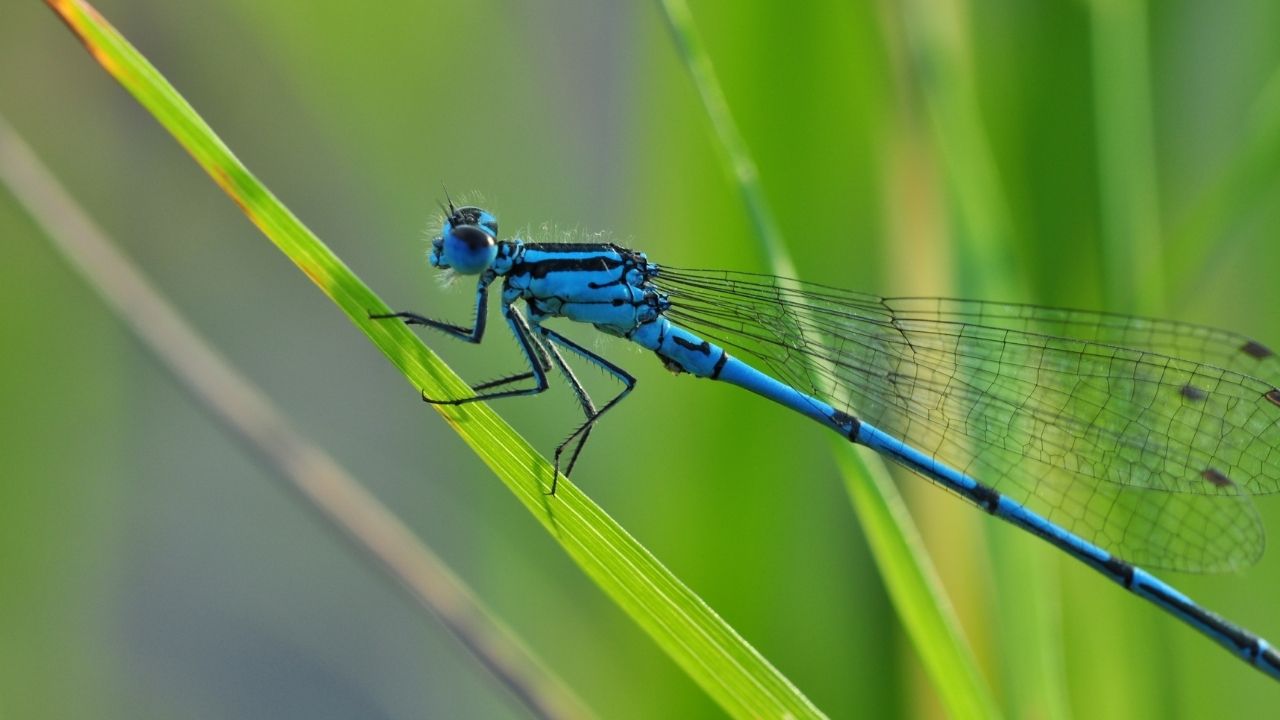Table of Contents [hide]
Introduction to Dragonflies
Welcome to the enchanting world of dragonflies, where these captivating insects take flight and mesmerize us with their vibrant colors and graceful movements. Have you ever wondered how long do dragonflies live? Prepare to be amazed as we dive into the fascinating lifespan of these winged creatures that have captured our imagination for centuries.
Dragonflies are more than just delicate beauties; they are also skilled hunters, playing a crucial role in maintaining the delicate balance of ecosystems worldwide. From their intriguing life cycle to the factors that influence their lifespan, join us on this exploration into the secrets of dragonfly longevity.
So grab your magnifying glass and let’s embark on an enthralling journey through time as we unravel the mysteries behind how long these remarkable insects truly live!
The Life Cycle of a Dragonfly
The life cycle of a dragonfly is truly fascinating, as these incredible insects undergo a complete metamorphosis. It all begins when a female dragonfly lays her eggs in or near water, such as ponds, lakes, or rivers. These eggs are typically attached to plants or other objects just below the water’s surface.
Once the eggs hatch, they become nymphs, also known as naiads. Nymphs are aquatic creatures that live underwater and resemble mini versions of adult dragonflies. They spend most of their time hunting for food and growing rapidly.
As the nymph grows larger and molts several times, it eventually reaches its final stage before becoming an adult – the emergence phase. During this stage, the nymph crawls out of the water onto a plant stem or other vertical surface.
The exoskeleton splits open along the back of the nymph, and an adult dragonfly emerges from within. At first, its wings are soft and crumpled but quickly expand and harden over time. Once fully developed, the adult dragonfly takes flight into its new world.
Adult dragonflies typically live for several weeks to a few months depending on various factors such as species and environmental conditions. They spend their short lives voraciously feeding on small insects like mosquitoes while mating and continuing their lifecycle by laying more eggs in suitable bodies of water.
The life cycle of a dragonfly is truly remarkable – from egg to nymph to soaring through the air with grace. Each stage has unique characteristics that contribute to their overall survival strategy in nature’s intricate web.
Factors Affecting Dragonfly Lifespan
Dragonflies are fascinating creatures that captivate us with their vibrant colors and graceful flight. But have you ever wondered how long they actually live? The lifespan of a dragonfly can vary depending on several factors.
Environmental conditions play a crucial role in determining the lifespan of dragonflies. These insects thrive in warm and sunny habitats, where they can find an abundance of food and breeding sites. Harsh weather conditions such as extreme heat or cold can significantly impact their survival rate.
Predation is another factor that affects the lifespan of dragonflies. Being at the top of the insect food chain, dragonflies are often preyed upon by birds, frogs, and other larger predators. Their ability to evade these predators through their agile flight skills can determine whether they survive for a few weeks or several months.
Availability of suitable breeding sites is essential for the continuation of the species. Dragonflies lay their eggs in water bodies such as ponds or lakes. If these habitats become polluted or destroyed due to human activities, it can greatly reduce their chances of successful reproduction and consequently decrease their overall population size.
Additionally, access to a nutritious diet plays a significant role in determining the longevity of dragonflies. These insects primarily feed on small flying insects like mosquitoes and flies. If there is a scarcity of prey due to changes in ecosystems or pesticide use reducing insect populations, it can negatively impact the survival rate of dragonflies.
Genetic factors also influence how long individual dragonflies live. Some species naturally have shorter lifespans compared to others due to differences in their biological makeup and reproductive strategies.
Longest Living Dragonflies
Dragonflies are fascinating creatures known for their vibrant colors and agile flight. But have you ever wondered how long these captivating insects live? Let’s delve deeper into the world of dragonflies to discover some of the longest living species.
One notable contender for the title of longest-living dragonfly is the Green Darner (Anax junius). These majestic insects can survive up to five months as adults, which is quite impressive considering that most dragonfly species only live for a few weeks or months. They embark on epic migrations, covering thousands of miles in search of suitable breeding grounds.
Another noteworthy mention goes to the Black Saddlebags (Tramea lacerata), which have been recorded to live up to six months as adults. With their distinct dark wings and slender bodies, they gracefully traverse open areas, feeding on small insects mid-flight.
The Common Whitetail (Plathemis lydia) also deserves recognition for its longer lifespan among dragonflies. These elegant creatures can endure for several months as adults, showcasing their beautiful white patches on dark wings during flight.
It’s essential to note that while these species might boast relatively extended lifespans compared to others in their family, individual variations within populations exist. Factors such as environmental conditions and availability of food sources play significant roles in determining an insect’s lifespan.
Intriguingly, despite their seemingly short lives as adults, dragonflies spend a considerable portion of their existence underwater during earlier stages. As nymphs or larvae dwelling in freshwater habitats like ponds or streams, they can remain submerged for one to three years before undergoing metamorphosis into dazzling winged wonders.
Dragonfly enthusiasts find joy not only in observing these incredible insects but also understanding their ecological importance. As voracious predators with insatiable appetites for mosquitoes and other pests, adult dragonflies help control populations of potential disease carriers and agricultural pests.
To attract dragonflies to your garden, consider creating a water feature with freshwater plants to provide breeding grounds for nymphs. Also, avoid using pesticides and maintain natural areas to support these beneficial creatures. With proper care and conservation efforts, we can continue to marvel at the beauty and longevity of dragonflies for years to come.
Interesting Facts About Dragonflies
Dragonflies are undoubtedly fascinating creatures that have captured the curiosity of humans for centuries. Here are some truly captivating and lesser-known facts about these elegant insects.
1. Ancient Predators: Dragonflies have been around for millions of years, with fossil evidence dating back more than 300 million years! They were one of the first winged insects to evolve and have remained relatively unchanged ever since.
2. Speed Demons: These agile fliers are incredibly fast, capable of reaching speeds up to 35 miles per hour! Their intricate wing structure allows them to maneuver swiftly and smoothly through the air.
3. Marvelous Eyesight: Dragonflies possess some of the most remarkable eyes in the insect world. With compound eyes made up of thousands of individual lenses, they can see in almost every direction simultaneously, providing them with exceptional vision while hunting prey or avoiding predators.
4. Expert Hunters: Speaking of hunting, dragonflies are skilled predators that primarily feed on other flying insects like mosquitoes and gnats. They can capture their prey mid-flight by using their spiky legs like a basket or by snatching it out from a nearby leaf or stem.
5. Complex Mating Rituals: When it comes to romance, dragonflies engage in elaborate courtship displays before mating takes place. The male will often perform acrobatic flights or offer gifts such as prey items to impress the female and secure her affections.
6.Jet-Propelled Nymphs: Before transforming into adults, dragonflies spend much of their lives as aquatic nymphs living underwater in ponds or streams. These nymphs propel themselves through water by forcefully expelling water from their rear end – giving them an impressive jet-like propulsion system!
7.Colorful Diversity: Dragonflies come in various colors and patterns depending on their species but also within each species itself! This vibrant diversity adds to their allure and makes spotting different varieties even more exciting for nature enthusiasts.
8. Incredible Migration: Some dragonfly species undertake epic migratory journeys, traveling thousands of miles across continents. The globe skimmer dragonfly, for example, migrates from India to Africa and back each year.
9. Symbolic Significance: In many cultures, dragonflies are revered as symbols of strength, courage, and transformation. In Japan, they are seen as a symbol of happiness and success, while Native American traditions associate them with purity and swiftness.
10. Short-Lived Beauty: Despite their long lifespans as nymphs, adult dragonflies only live for a few weeks or months – just enough time to mate and lay eggs before they die. This fleeting existence makes their presence all the more precious in the natural world.
Importance of Dragonflies in the Ecosystem
Dragonflies may seem like delicate creatures, but they play a crucial role in maintaining the balance of our ecosystem. These fascinating insects are not just beautiful to look at; they are also highly efficient predators that help control populations of mosquitoes and other pests.
One of the main reasons dragonflies are so important is their voracious appetite for mosquitoes. Adult dragonflies can consume hundreds of these disease-carrying pests in a single day, helping to keep their numbers in check and reducing the risk of mosquito-borne illnesses such as malaria and dengue fever.
In addition to controlling mosquito populations, dragonflies also serve as indicators of water quality. Their nymphs live underwater for several months or even years before emerging as adults. The presence or absence of certain species can provide valuable insights into the health of aquatic ecosystems. If dragonfly populations decline, it could be a sign that something is amiss with the water quality.
Furthermore, dragonflies themselves serve as an important food source for many other animals in the ecosystem. Birds, frogs, fish, and even spiders rely on these agile insects for sustenance. Without dragonflies, these predator-prey relationships would be disrupted, leading to imbalances within the food chain.
The ecological importance of dragonflies extends beyond their direct interactions with other organisms. As aerial hunters with incredible agility and speed, they contribute to pollination by transferring pollen from flower to flower while feeding on nectar. This makes them effective pollinators for various plant species.
It’s clear that dragonflies have a significant impact on our environment and should be valued and protected. By creating habitats that support their life cycle—such as providing clean bodies of water for nymphs—and avoiding pesticide use near water sources where they breed, we can ensure their continued presence in our ecosystems.
Remember: Dragonfly conservation isn’t just about preserving one insect species; it’s about maintaining healthy ecosystems that benefit all living beings – including us humans. So, let’s appreciate and protect these remarkable creatures for their vital role in the natural world.
How to Attract and Protect Dragonflies
Dragonflies are not only fascinating creatures to observe, but they also play a crucial role in maintaining a balanced ecosystem. If you want to attract these beautiful insects to your garden and provide them with a safe habitat, there are some simple steps you can take.
Create an inviting environment by incorporating water features into your landscape. Dragonflies love water, so having a pond or even just a small birdbath will attract them. Ensure that there are plenty of perches nearby for them to rest on while hunting for prey.
Another way to attract dragonflies is by planting native vegetation around the water source. These plants serve as shelter and provide food sources for both the adults and larvae. Choose plants like cattails, rushes, and sedges that thrive in wetland areas.
Avoid using pesticides in your garden as they can be harmful not only to dragonflies but also other beneficial insects. Instead, embrace natural pest control methods such as introducing ladybugs or encouraging birds who feed on pests.
Make sure there is ample sunlight reaching the area near the water source as dragonflies prefer sunny spots for basking and mating.
By creating an ideal habitat for dragonflies, you not only enhance your own outdoor space but contribute to the overall health of our ecosystems. So go ahead and invite these enchanting creatures into your backyard!
Conclusion
Dragonflies are truly fascinating creatures that captivate our attention with their vibrant colors and aerial acrobatics. While their lifespan may vary depending on factors such as species, habitat conditions, and environmental pressures, these incredible insects can live anywhere from a few weeks to several months.
The life cycle of a dragonfly is an intricate process that begins in water and ends in the sky. From egg to nymph to adult, these insects undergo remarkable transformations before taking flight. It’s during their adult stage that they showcase their beauty and agility, spending their days hunting prey and mating.
Despite their relatively short lives, dragonflies play crucial roles in ecosystems around the world. They help control mosquito populations by feeding on them during both the larval and adult stages. Additionally, they serve as indicators of water quality since they rely on clean aquatic habitats for reproduction.
If you’re interested in attracting dragonflies to your garden or outdoor space, there are several steps you can take. Providing a suitable habitat with freshwater sources like ponds or birdbaths will entice these graceful creatures to visit. Planting native vegetation near water bodies can also create ideal environments for dragonflies to thrive.
To protect dragonfly populations and ensure their continued presence in our ecosystems, it’s important to avoid using pesticides near water sources where they breed. By promoting biodiversity through sustainable gardening practices and protecting natural habitats from pollution and destruction, we can give dragonflies the best chance at survival.
Next time you spot a shimmering winged insect flitting about nearby or resting delicately on a leaf or branch, take a moment to appreciate the wonder of nature’s tiny aviators – the enchanting world of dragonflies awaits! So keep your eyes peeled for these captivating creatures as you explore nature’s wonders!
Remember: Dragonflies may have brief lives but leave lasting impressions wherever they go!











